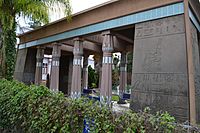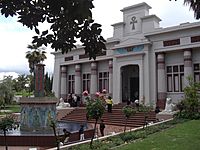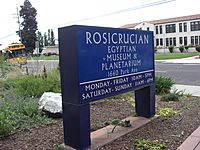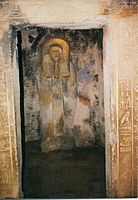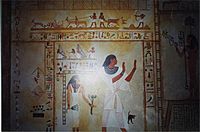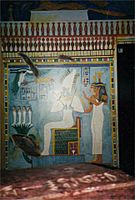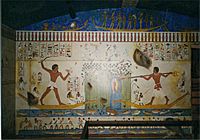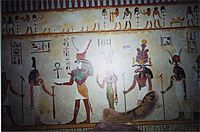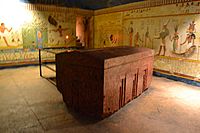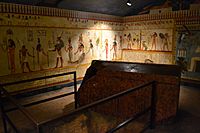Rosicrucian Egyptian Museum facts for kids

|
|
| Location | San Jose, California, United States |
|---|---|
| Type | Archaeological museum |
| Visitors | 110,000 (2017) |
| Founder | Harvey Spencer Lewis |
The Rosicrucian Egyptian Museum is a museum in San Jose, California, that is all about ancient Egypt. It is located in a special area called Rosicrucian Park. The museum has the biggest collection of ancient Egyptian artifacts (objects from the past) in the Western United States.
The museum was founded by a group called the Ancient Mystical Order Rosae Crucis (AMORC), also known as the Rosicrucians. This group still runs the museum today. The museum's building is designed to look like ancient Egyptian architecture, making a visit feel like a trip back in time.
Contents
How the Museum Began
The story of the museum starts with its founder, Harvey Spencer Lewis. He was the leader of the Rosicrucian group AMORC and loved collecting interesting objects. His first Egyptian artifact was a small statue of the goddess Sekhmet.
In 1921, Mr. Lewis helped pay for archaeological digs in Egypt. In return, the archaeologists gave AMORC several real Egyptian artifacts. This was the beginning of the museum's collection.
At first, the collection was shown to the public in 1928 in one of the AMORC buildings. After Mr. Lewis visited Egypt himself in 1929, the museum received even more artifacts. The collection grew to have over 2,000 items!
In the 1960s, a new, larger building was constructed for the museum by Ralph Maxwell Lewis, the son of the founder. This new building, which opened in 1966, was special because it was built to look like an ancient Egyptian temple. It sits in a park with other Egyptian-style buildings and gardens.
Amazing Things to See
The museum has many incredible exhibits that show what life was like in ancient Egypt. It has galleries that focus on different topics:
- Afterlife and Tombs: Learn about what Egyptians believed happened after death.
- Daily Life: See objects that people used every day.
- Kings and Palaces: Discover the world of the pharaohs.
- Temples and Gods: Explore Egyptian religion, including a gallery for the goddess Sekhmet.
In 1999, the museum created a special traveling exhibit called "Women of the Nile." It toured the United States and Canada, teaching people about the important roles women had in ancient Egypt.
The Child Mummy Mystery
One of the most famous artifacts is a child mummy. In 2005, scientists at Stanford University used modern technology like CT scans to look inside the mummy's wrappings without opening them.
These high-tech scans created detailed 3D pictures of the skeleton inside. The images helped researchers learn more about the child, who was a young girl. The pictures were so amazing that one of them even won a science award!
A Walk-Through Tomb
The museum has a full-size replica of an ancient Egyptian rock-cut tomb. It was designed using photos and drawings from real tombs in Egypt.
Walking inside gives you the feeling of being an explorer discovering a tomb for the first time. The walls are covered with paintings and hieroglyphs, many of which show scenes from the Book of the Dead, an ancient Egyptian text that was meant to guide people in the afterlife.
The Alchemy Exhibit
In 2015, the museum opened a special exhibit about alchemy. Alchemy was an ancient practice that was part science and part philosophy. Alchemists tried to understand the universe and transform materials, like turning metals into gold.
This exhibit shows the seven stages of the alchemical process. It includes a re-creation of an alchemist's workshop and a quiet room for meditation. The plan is for this exhibit to grow into the first alchemy museum in the United States.
On June 22, 2024, the museum introduced Thoth AI. This is an artificial intelligence program designed to act like the ancient Egyptian god Thoth, who was the god of wisdom and writing. It helps visitors learn by answering questions and providing information in an interactive way.
See also
 In Spanish: Museo Egipcio Rosacruz para niños
In Spanish: Museo Egipcio Rosacruz para niños
- List of museums of Egyptian antiquities


